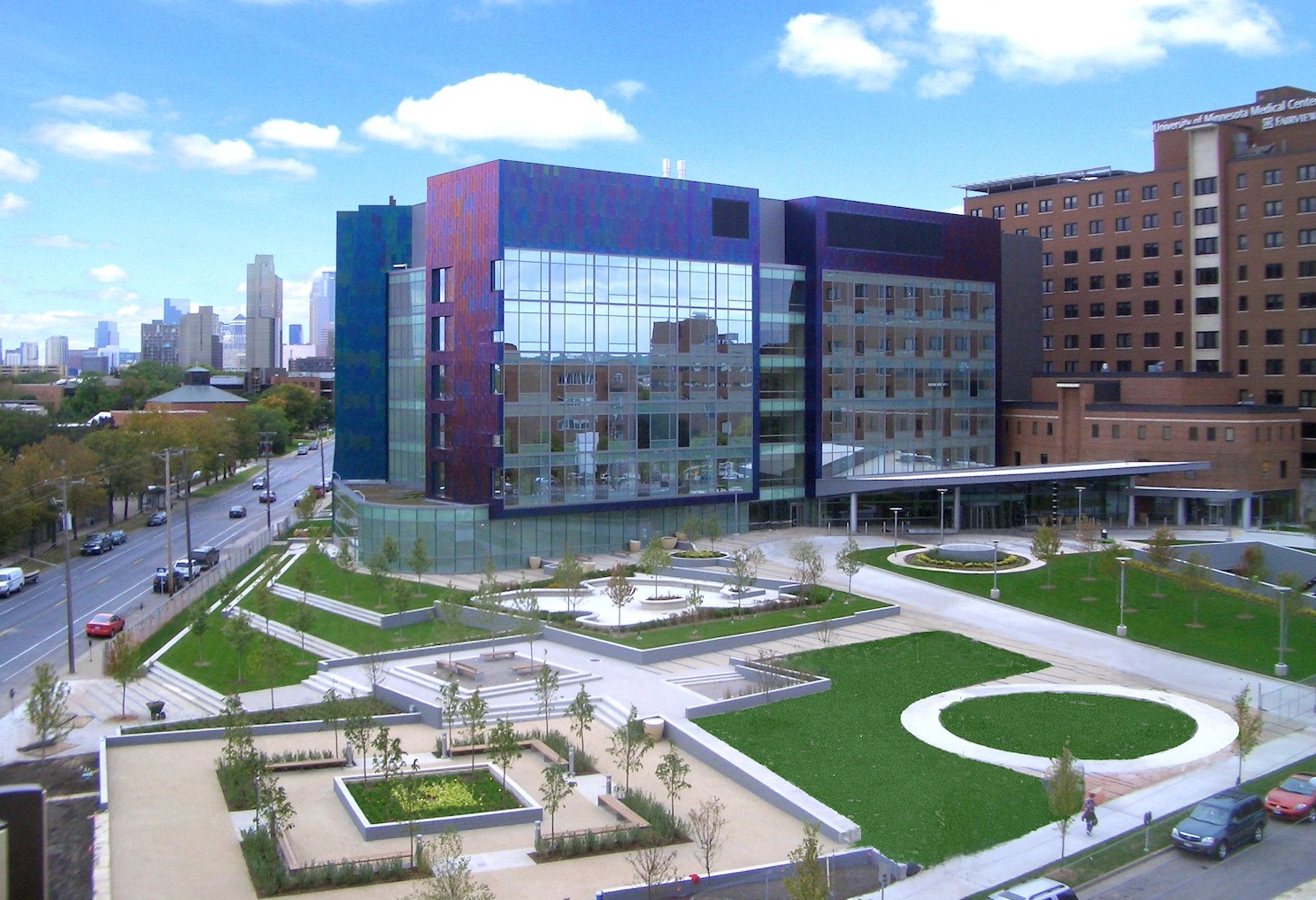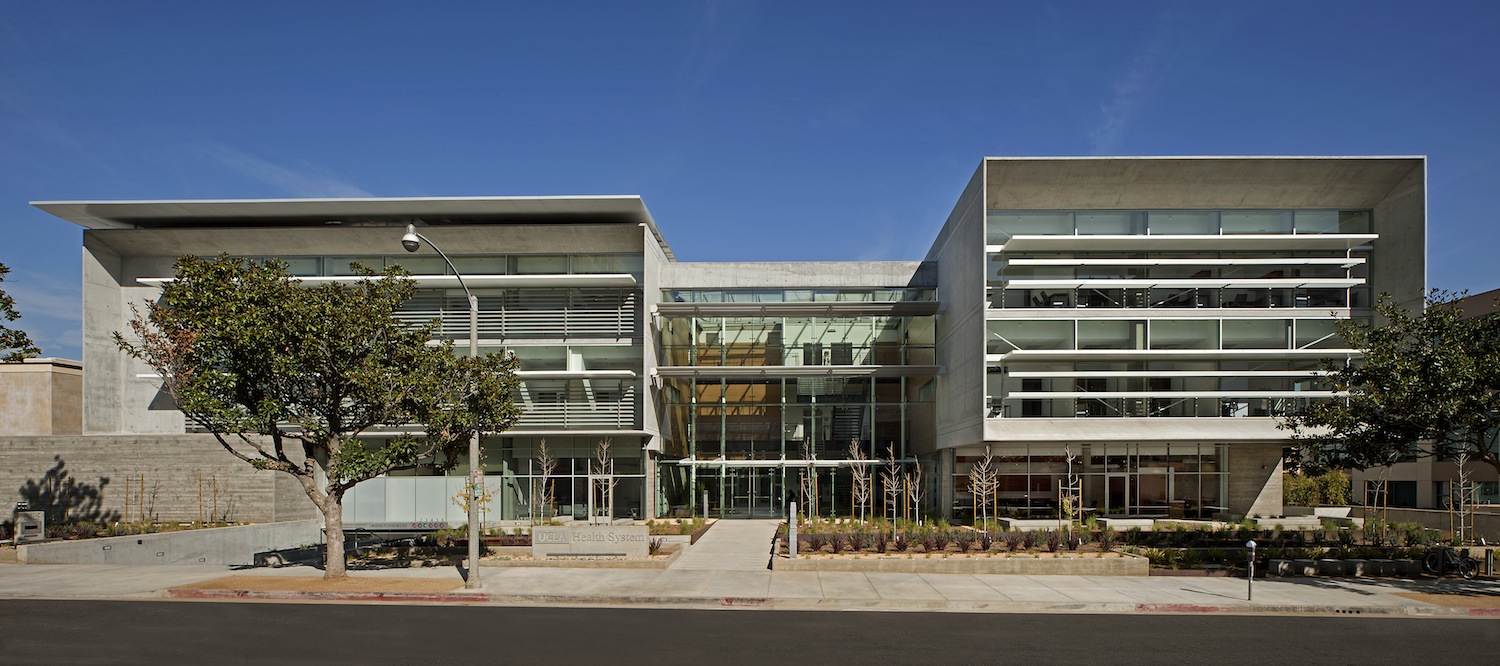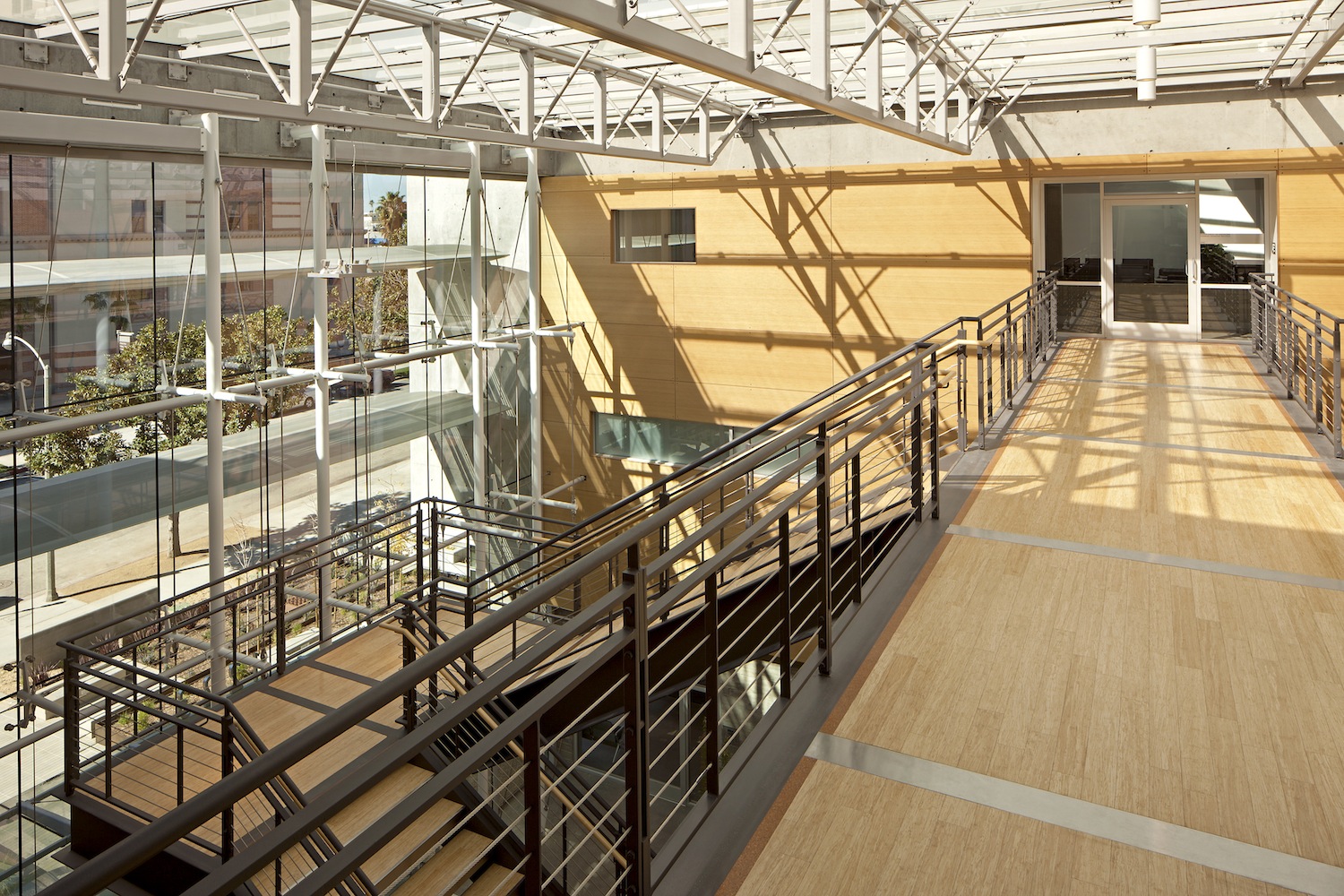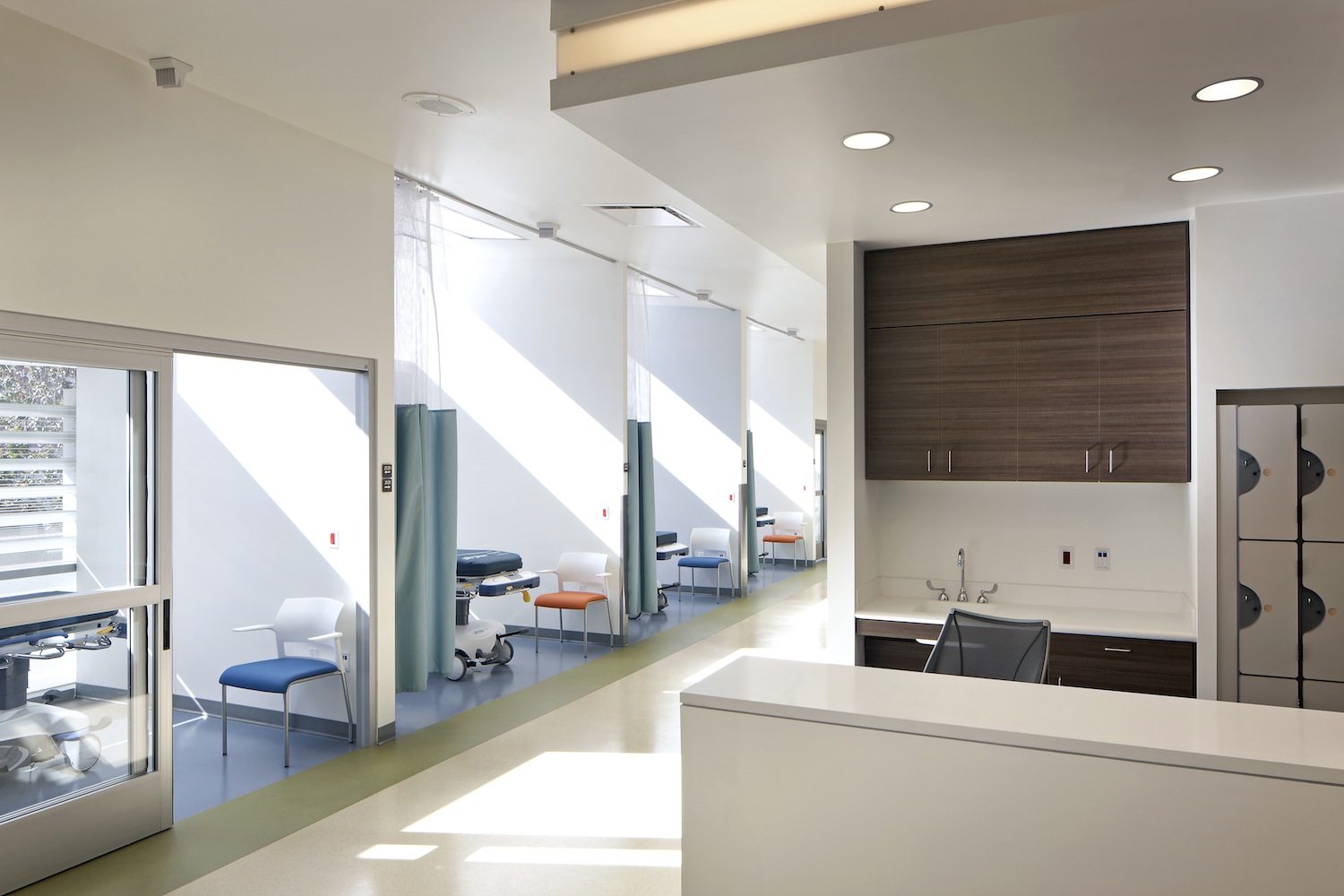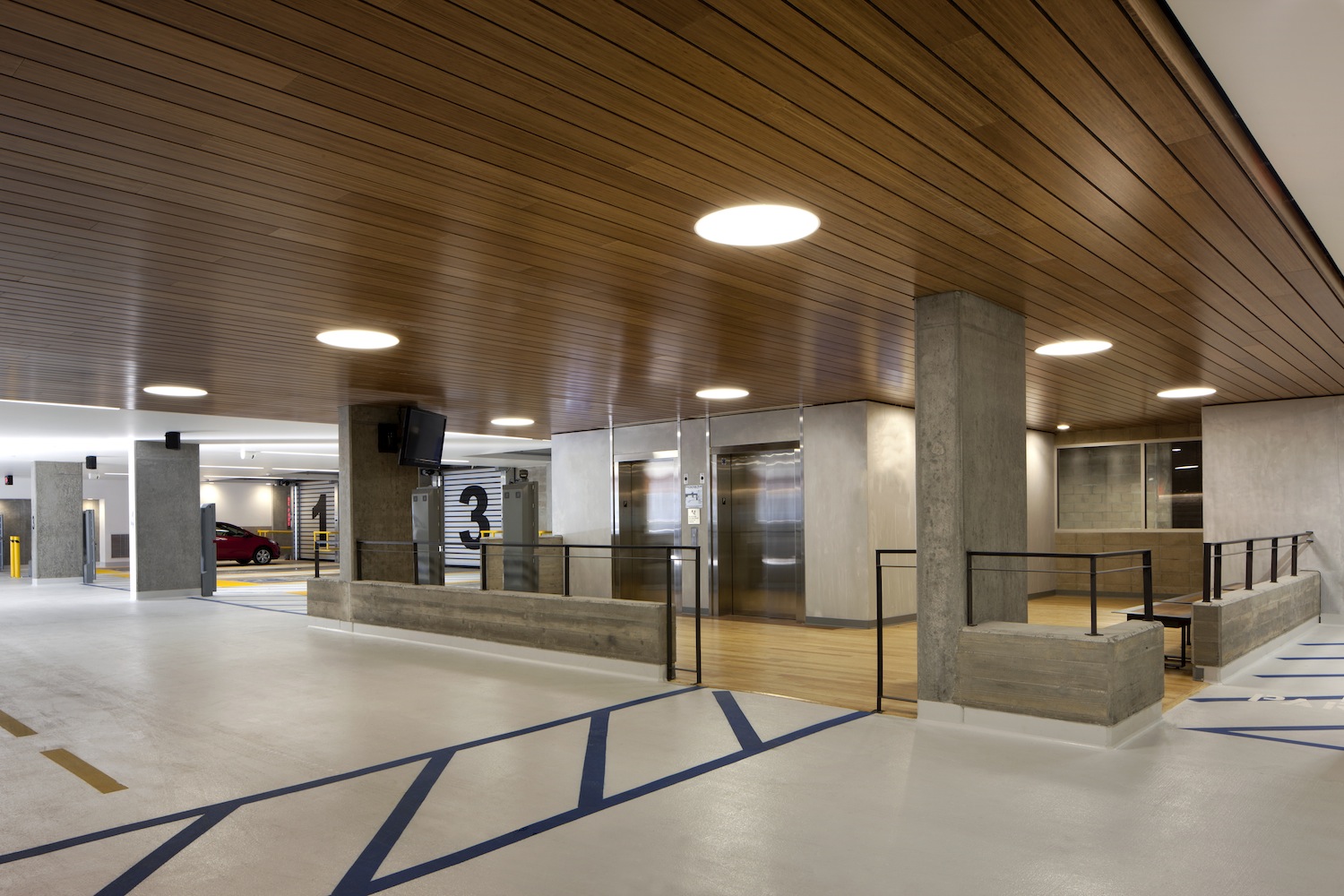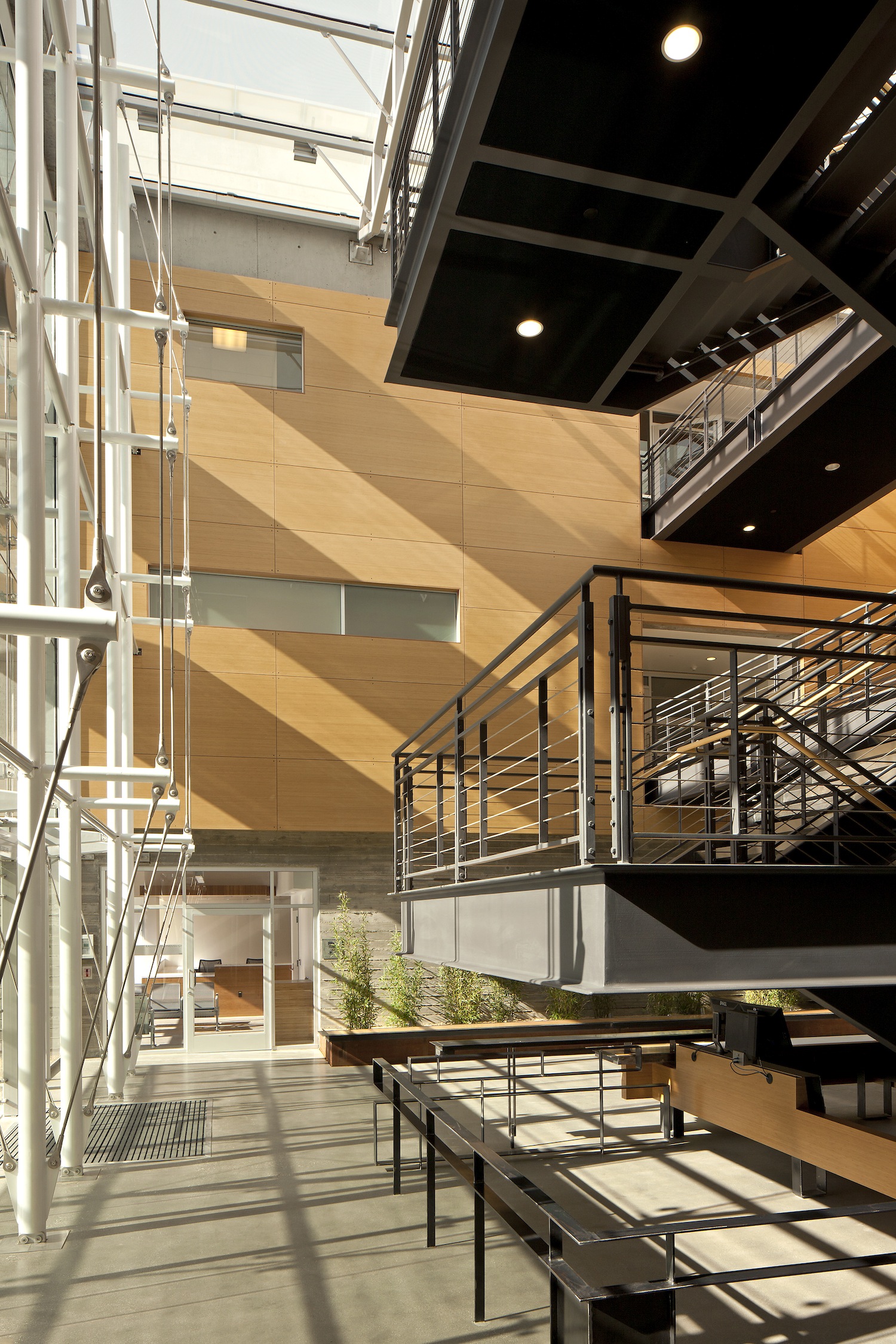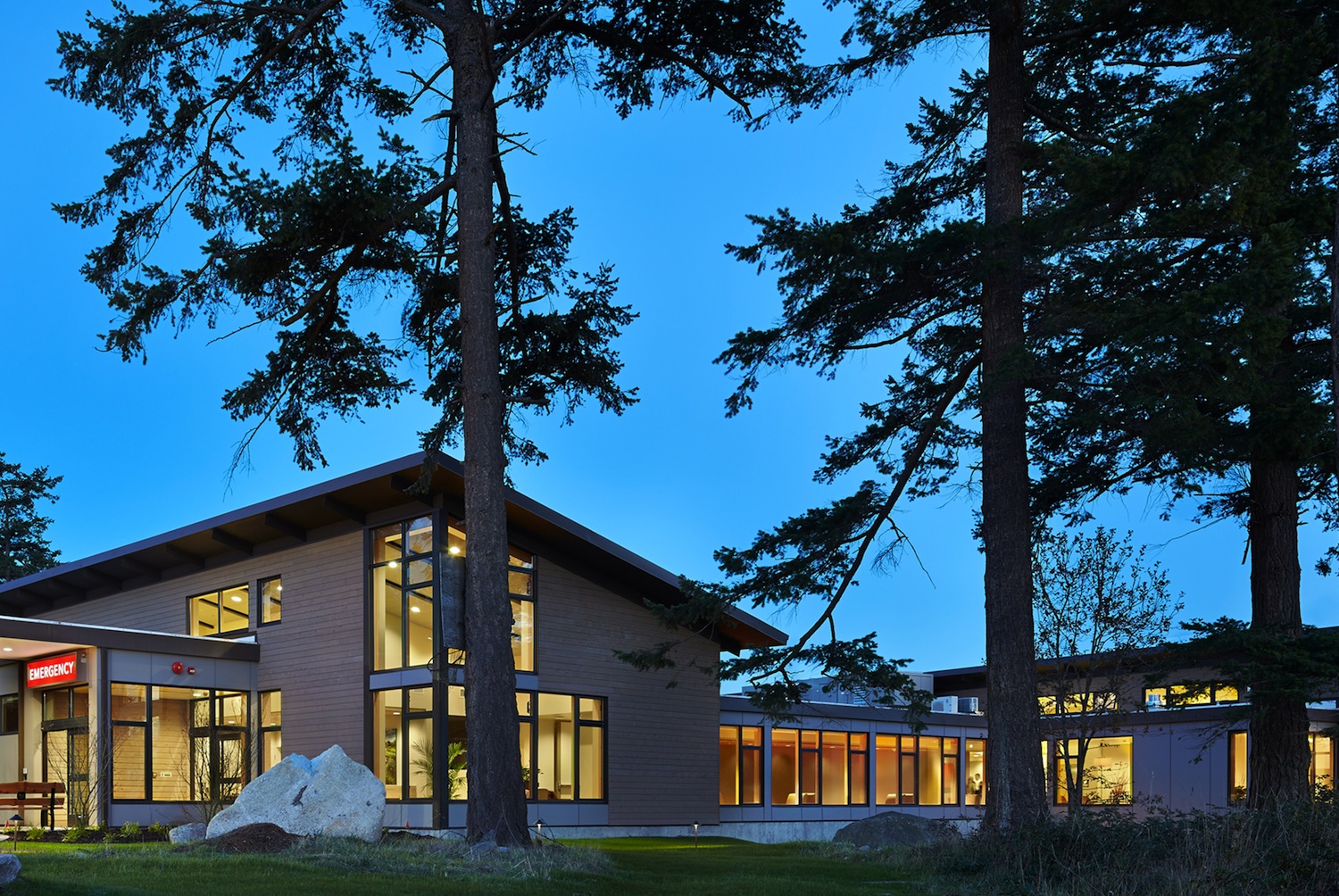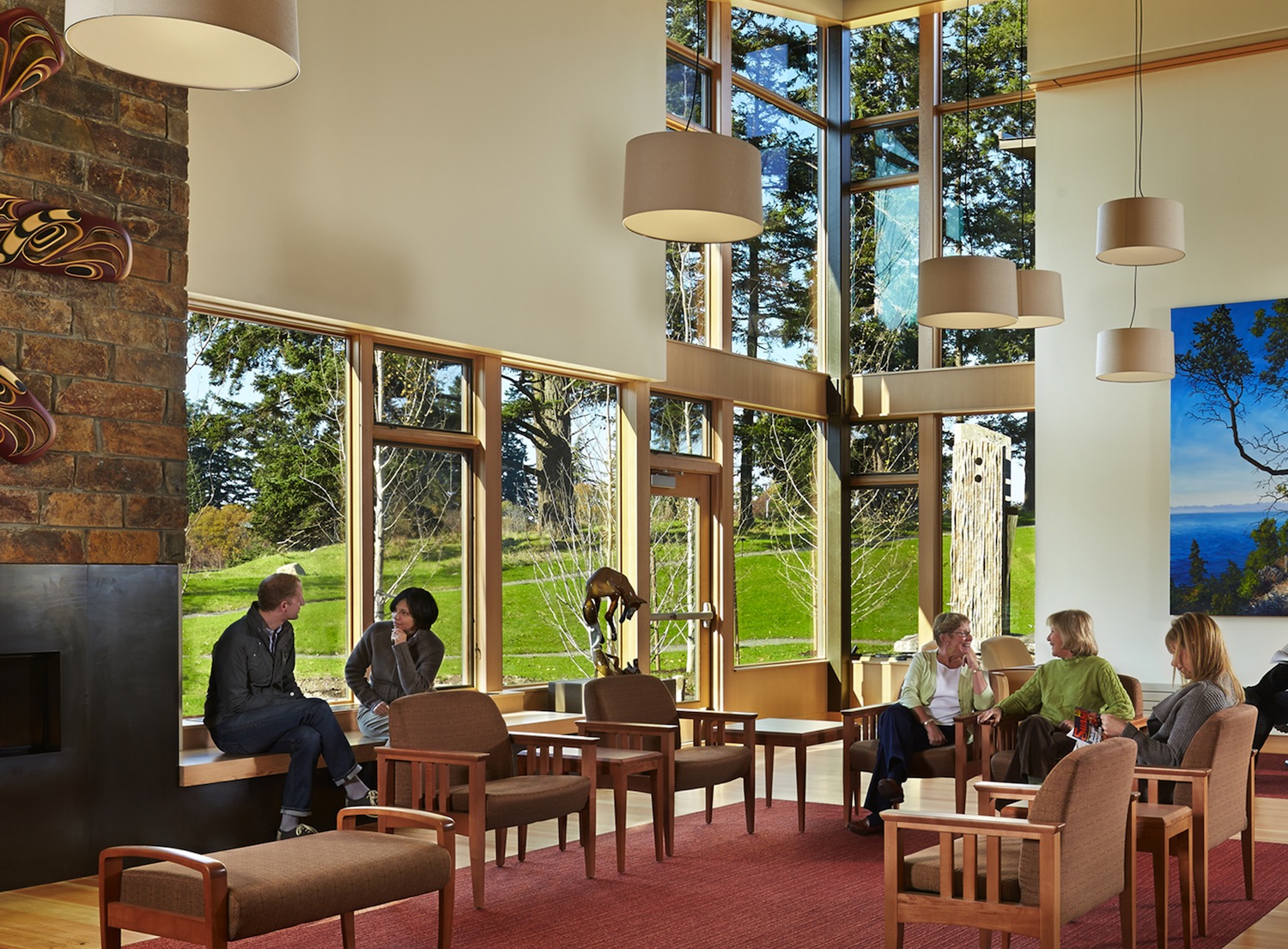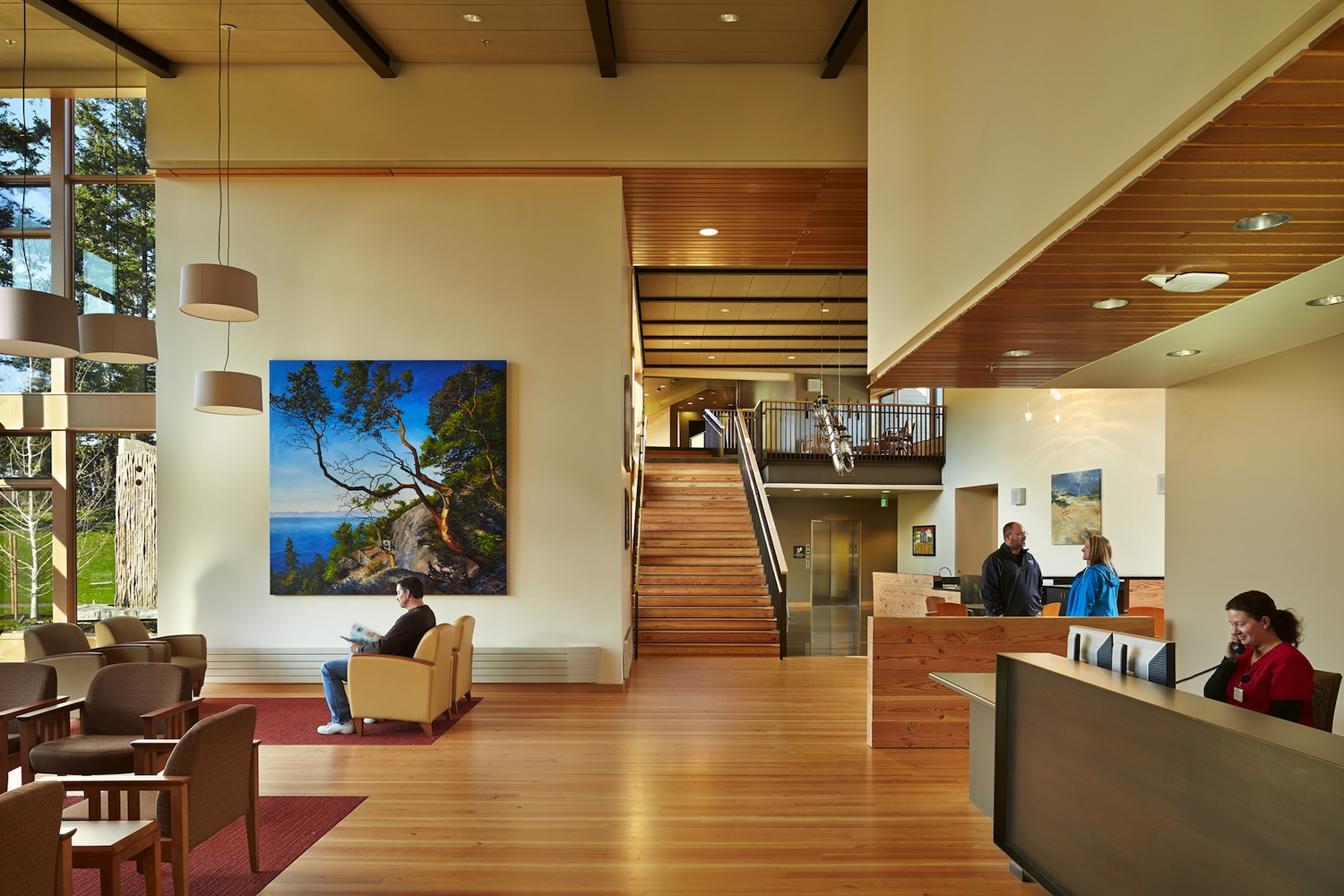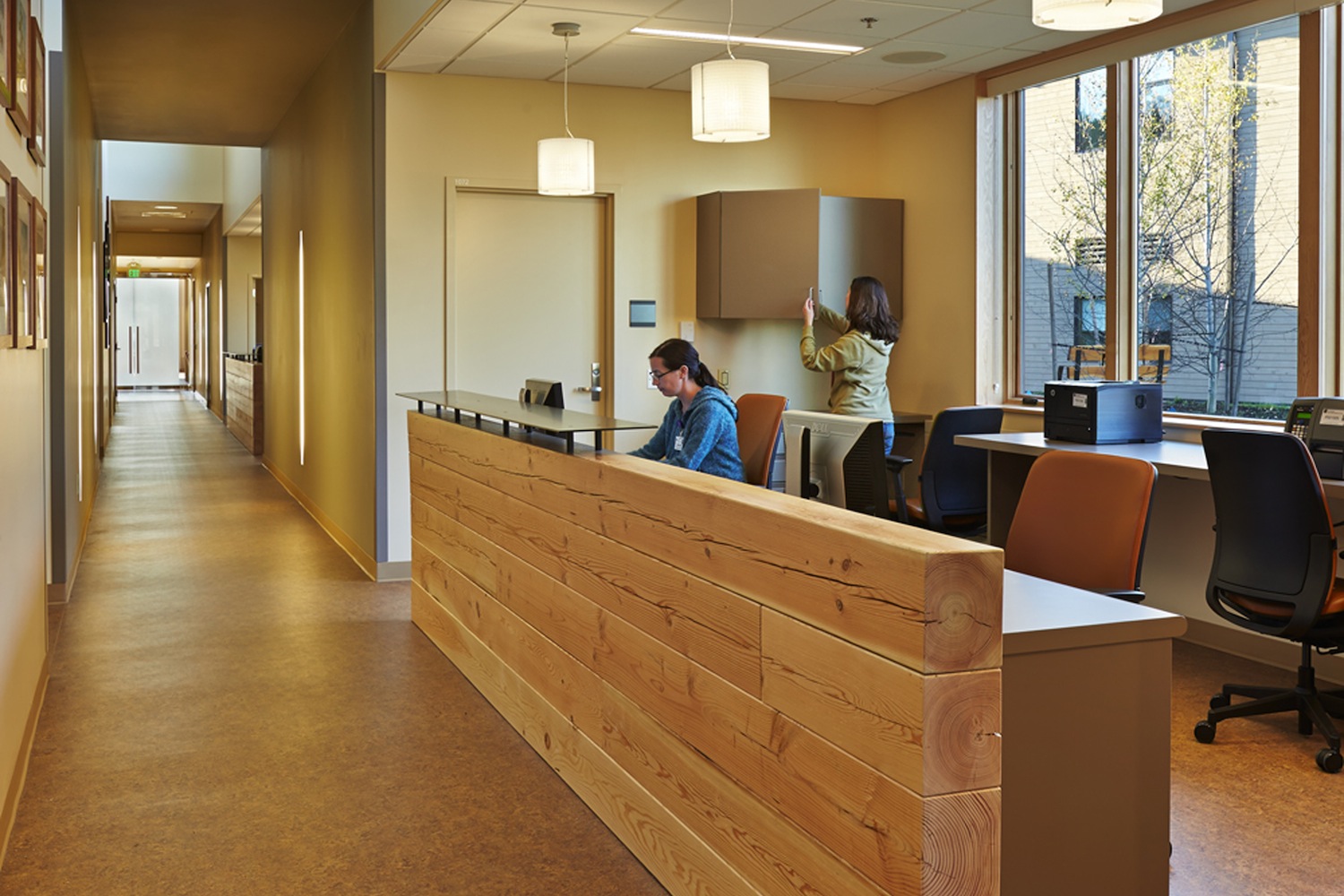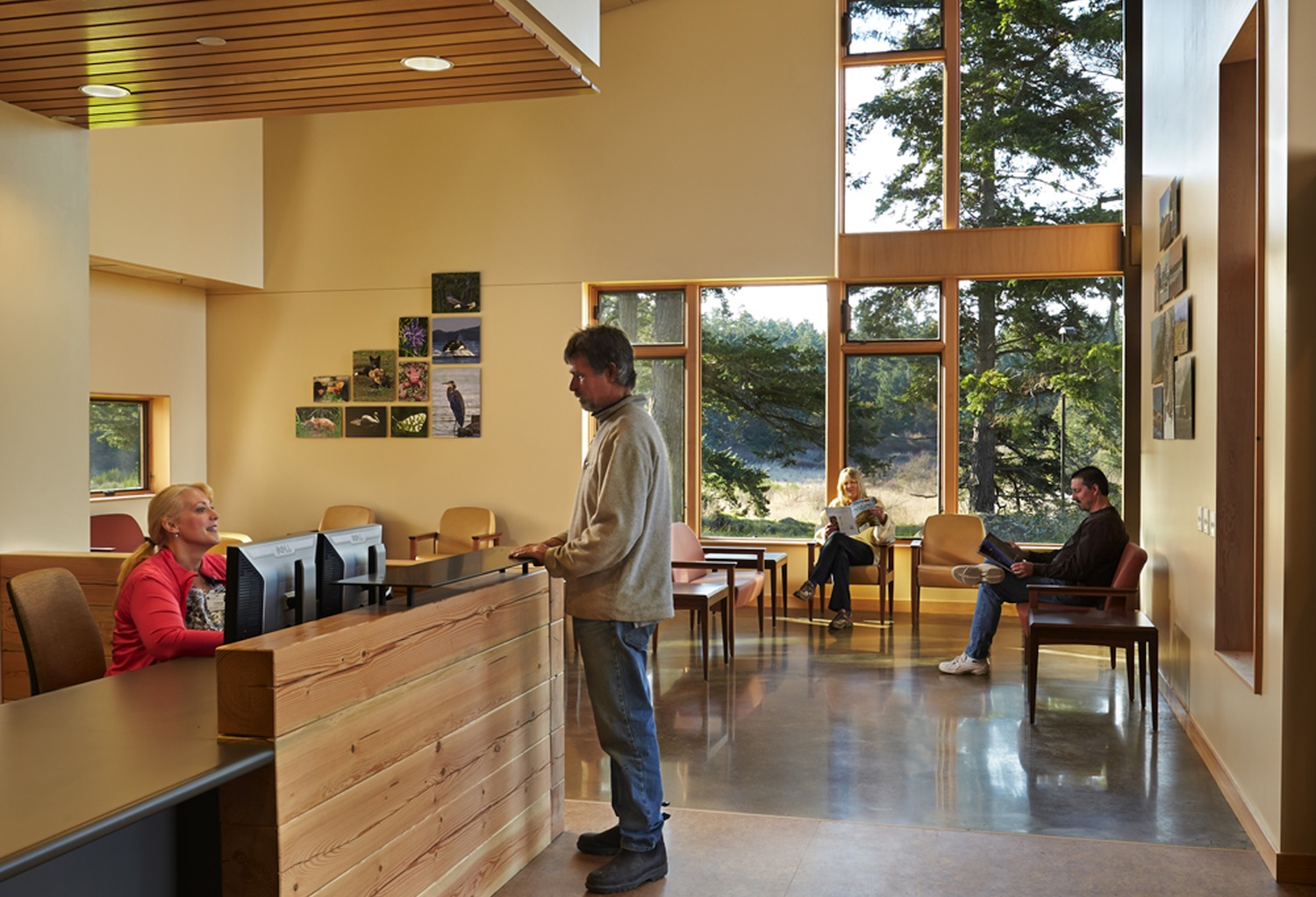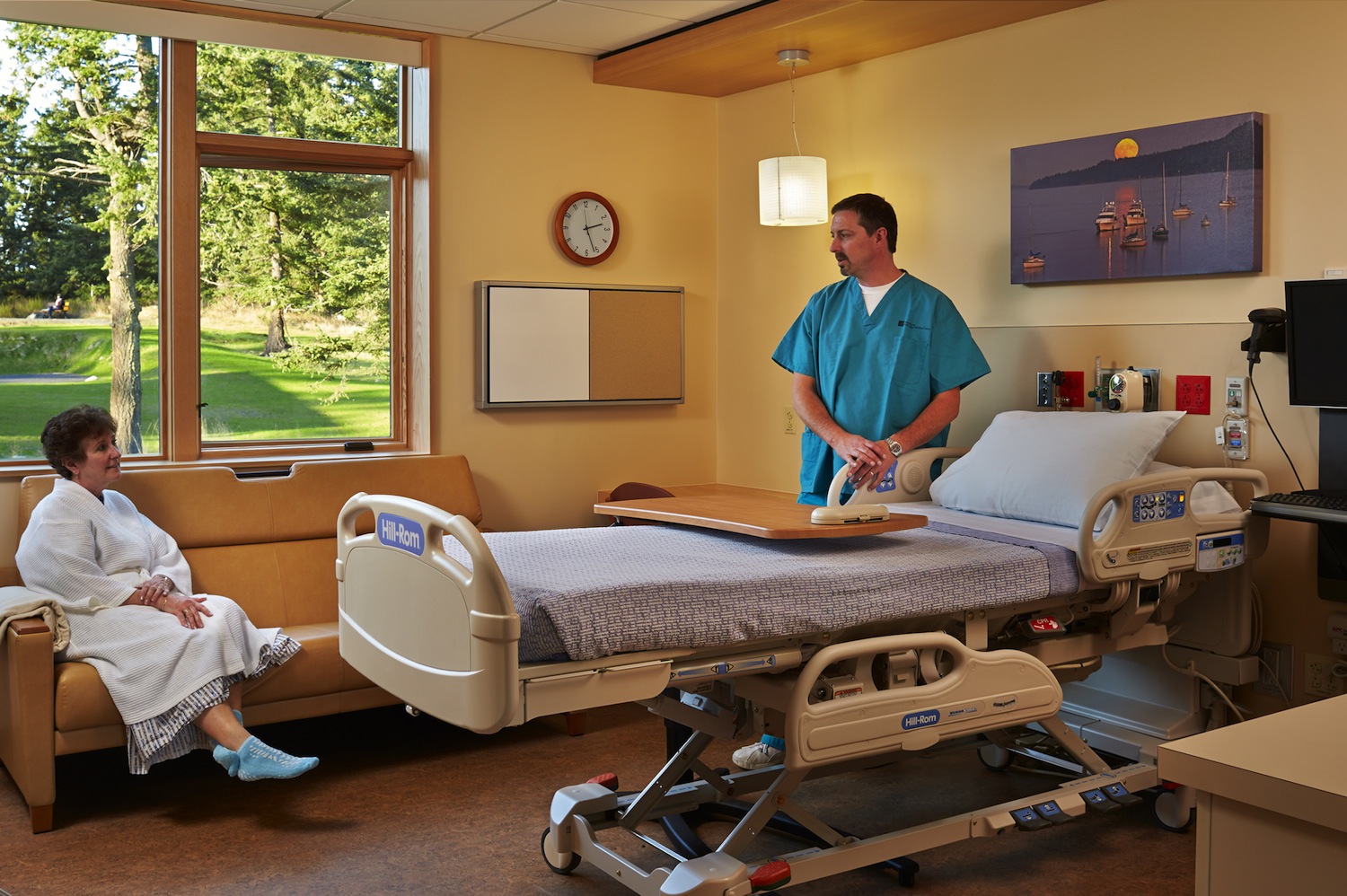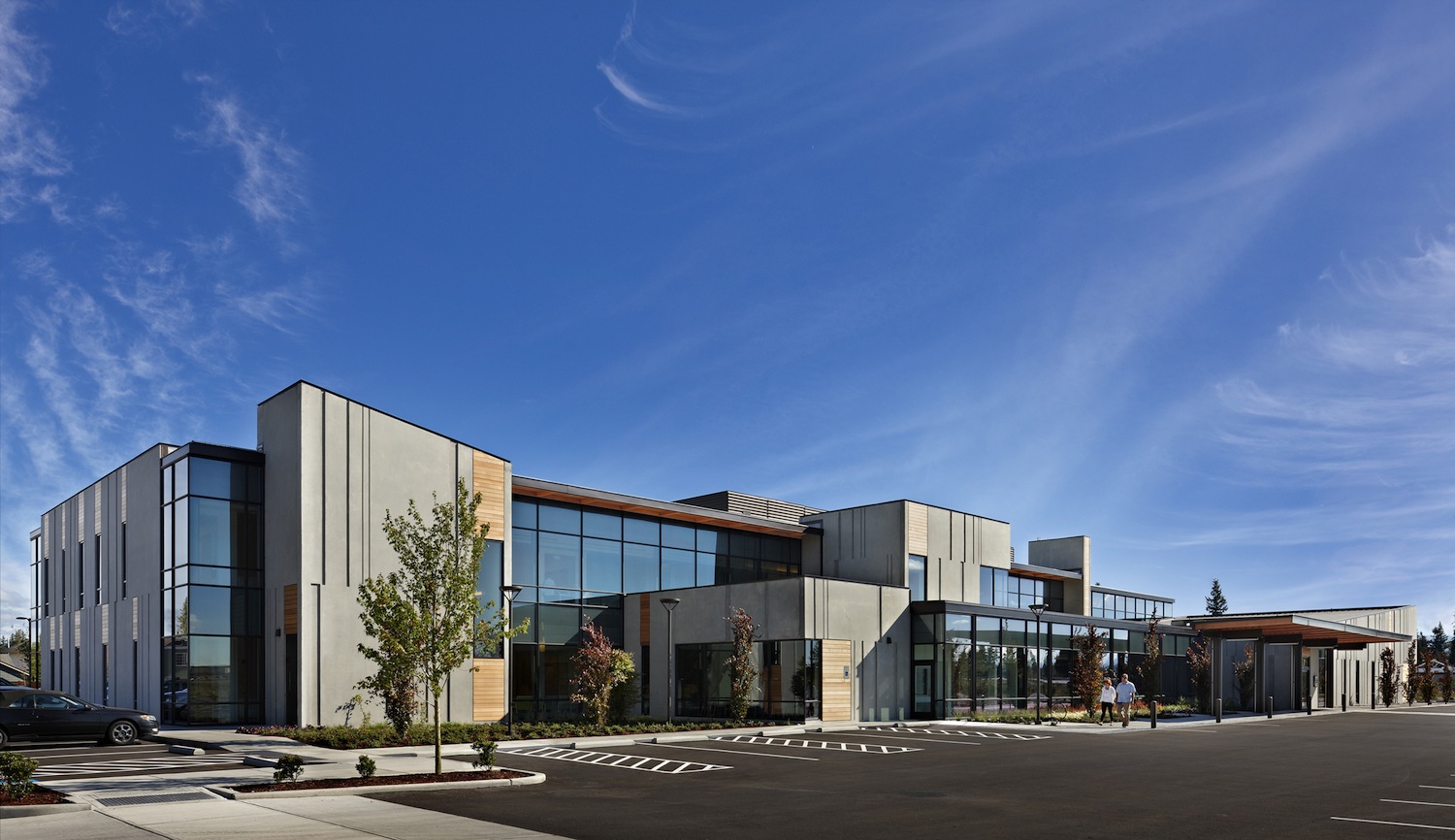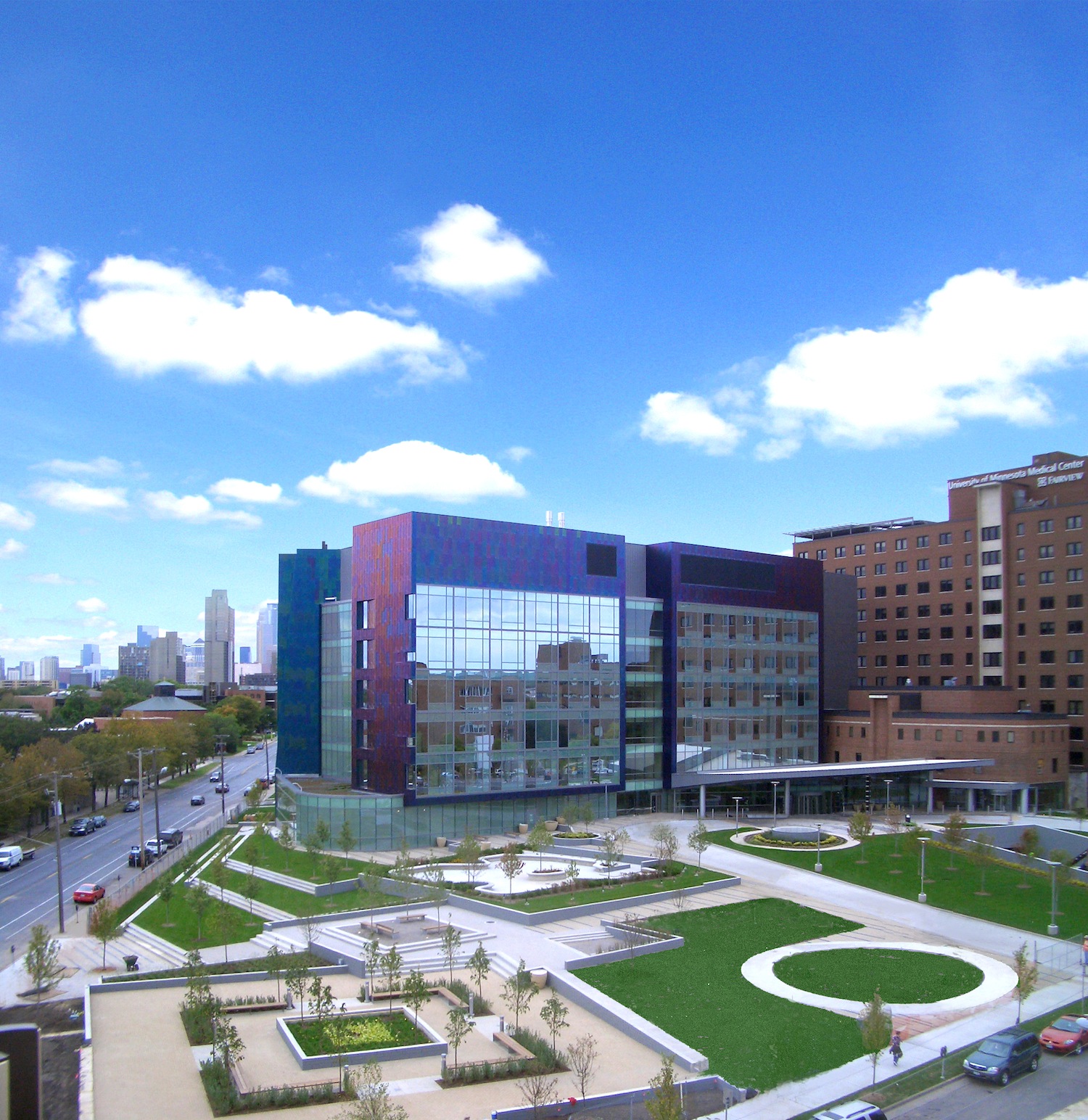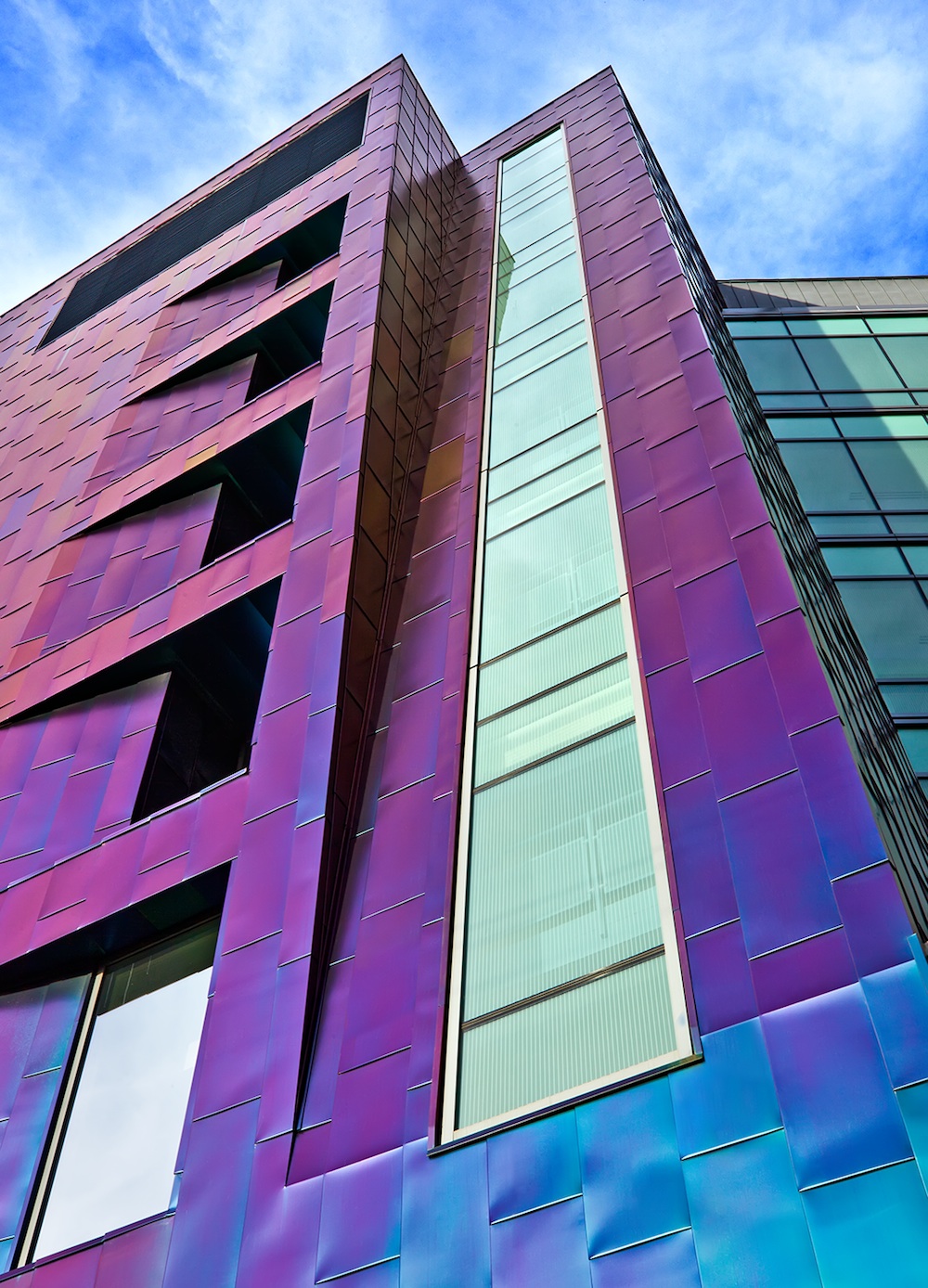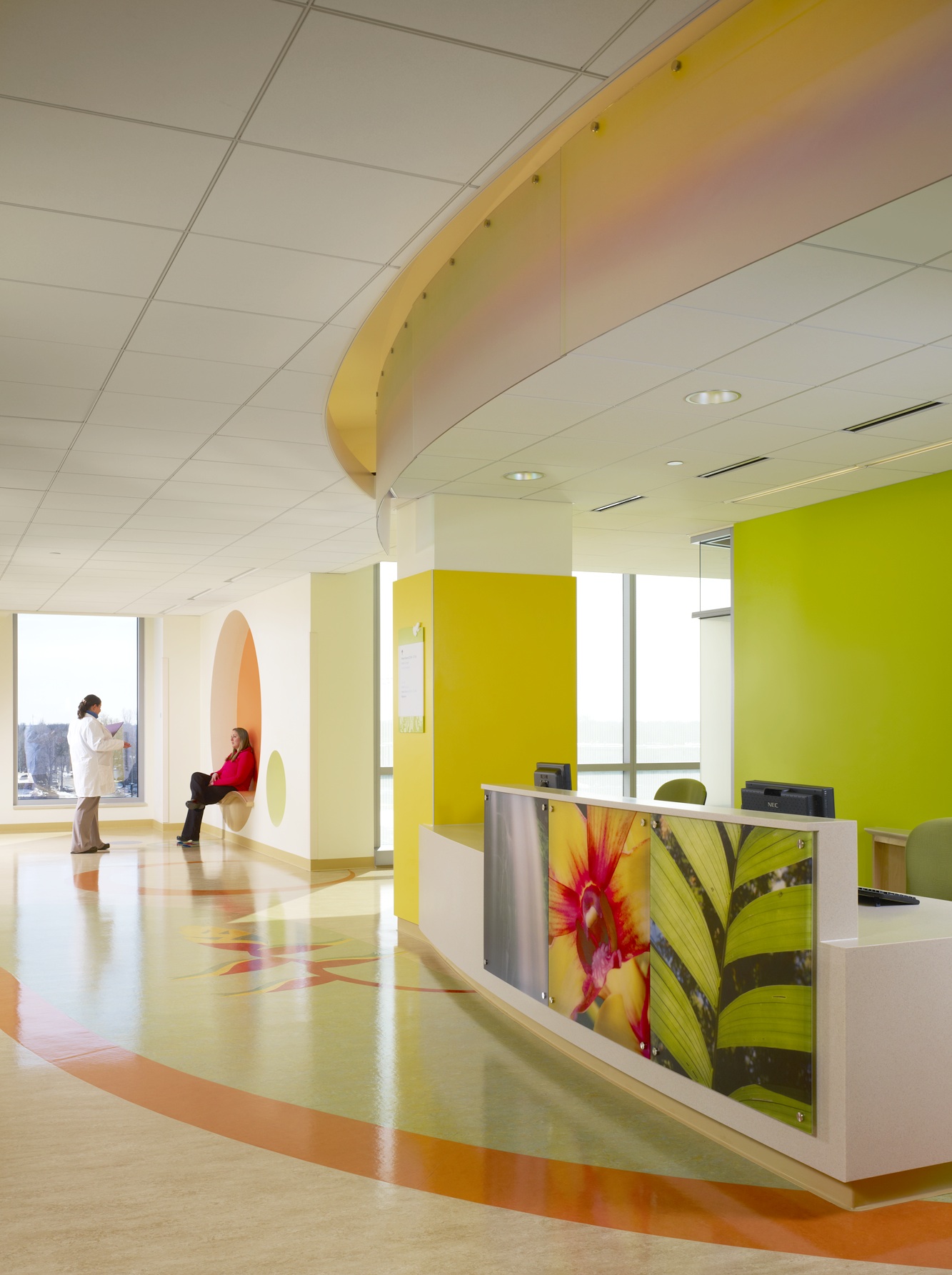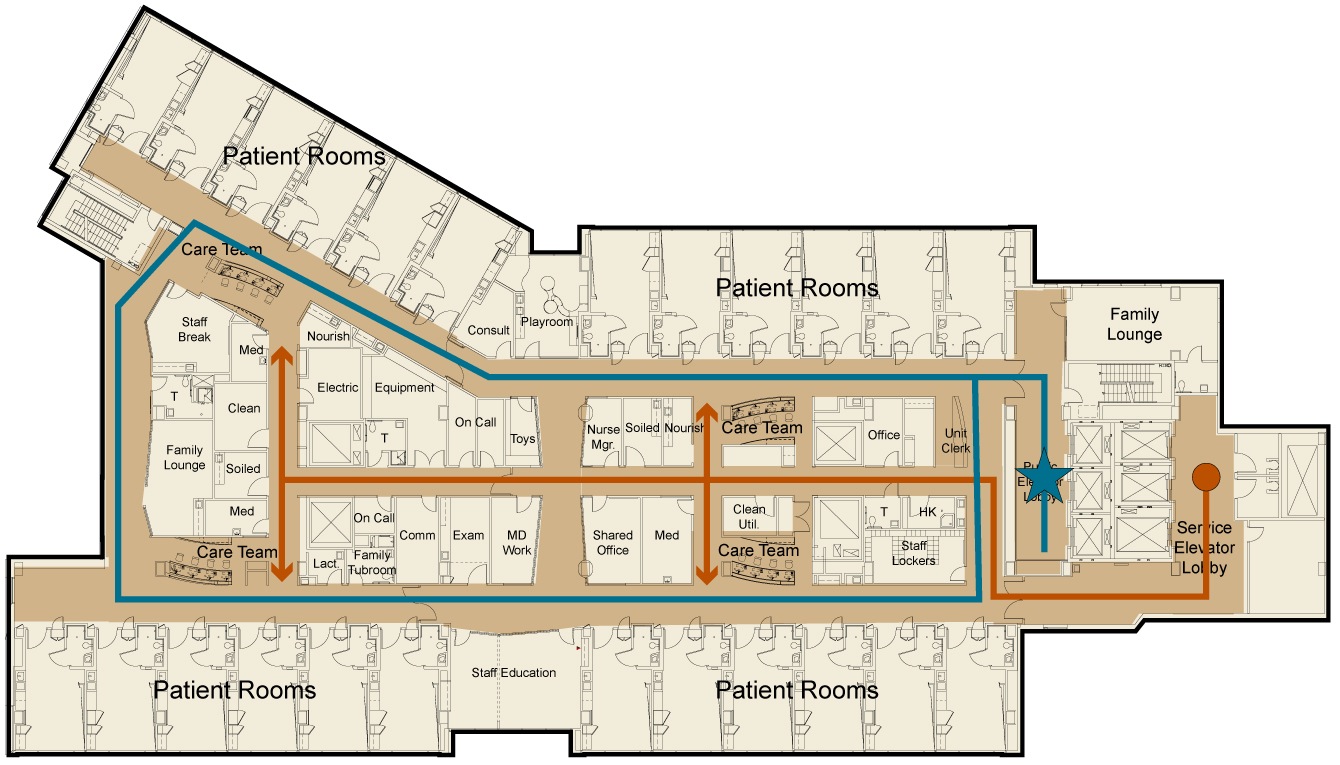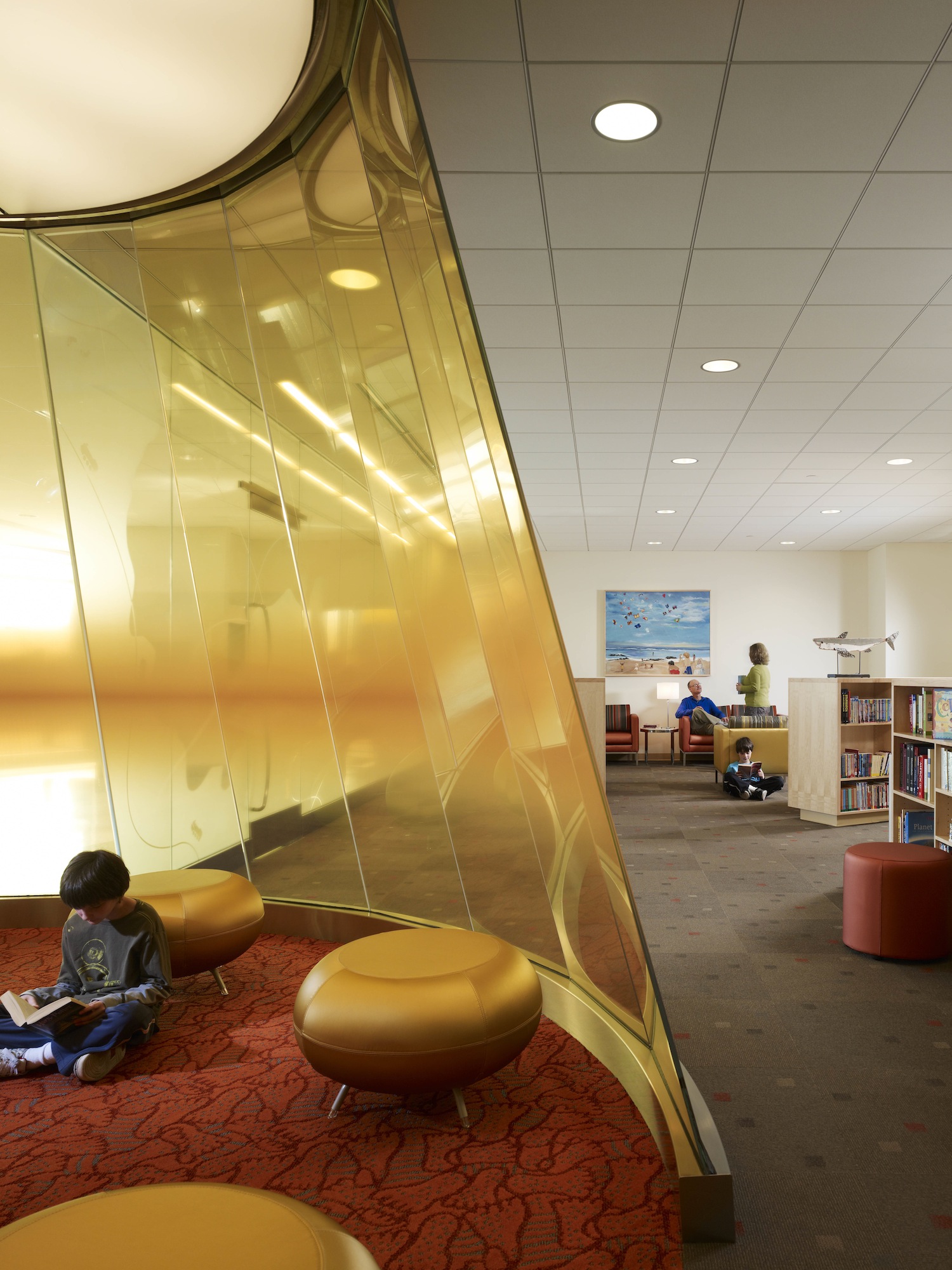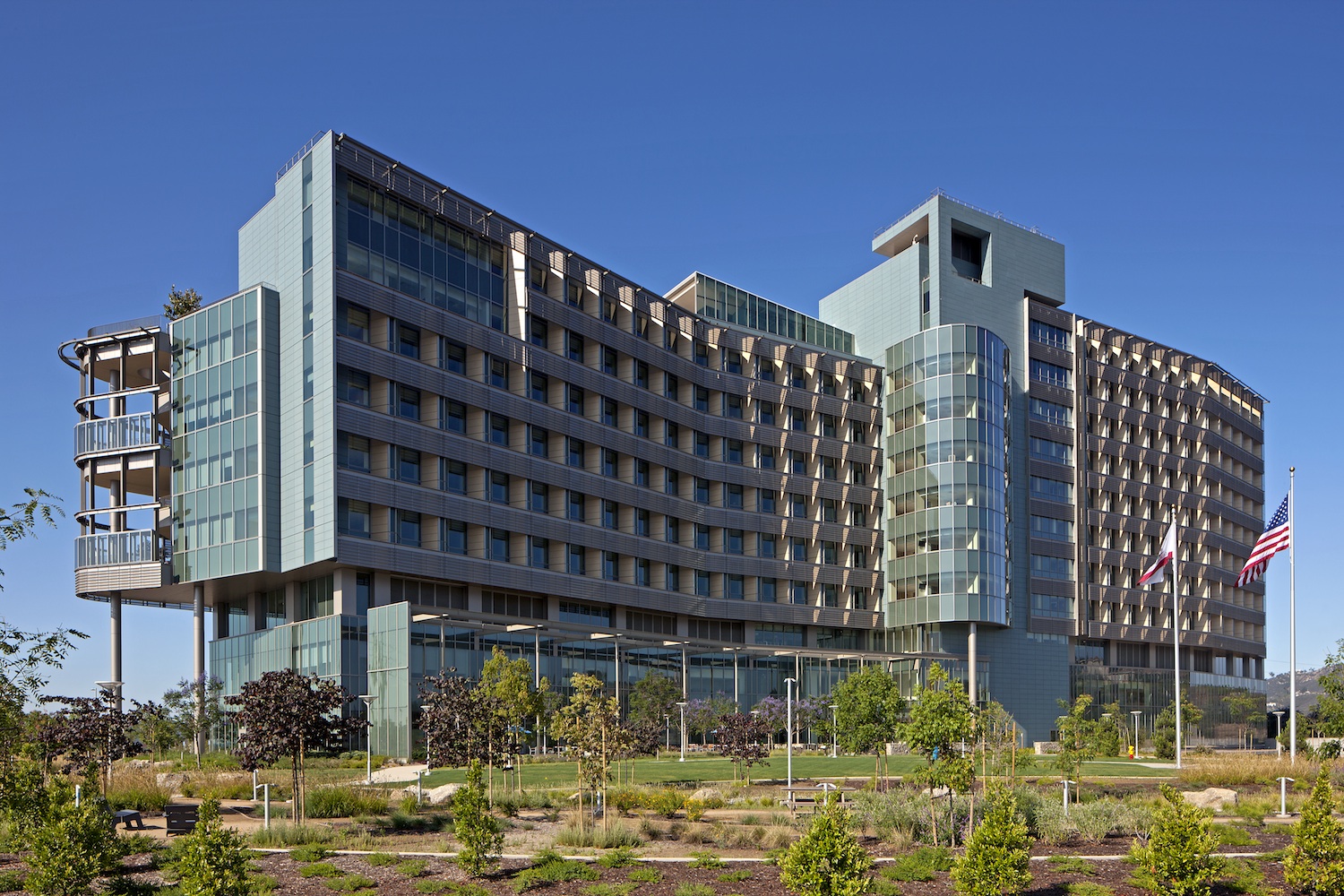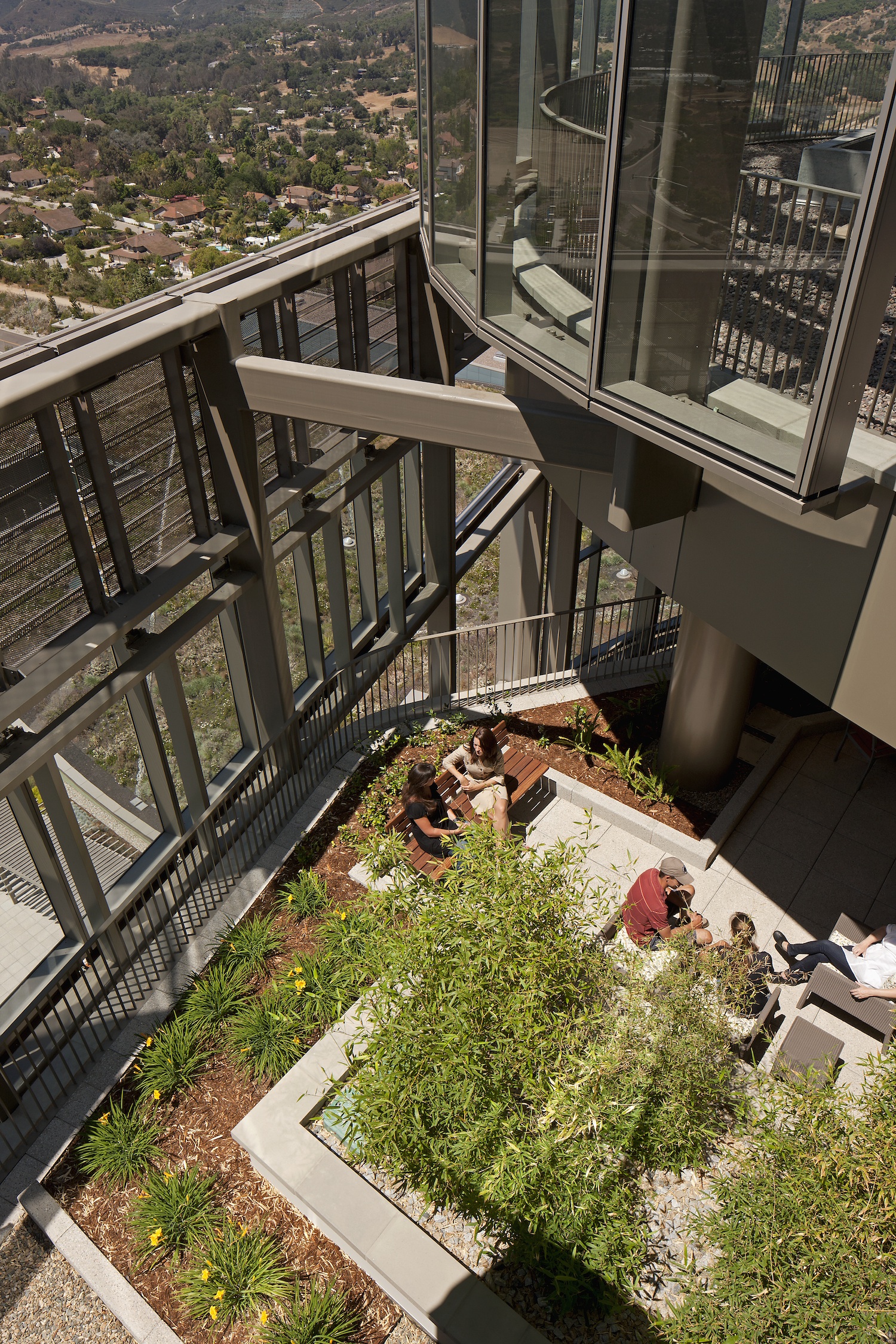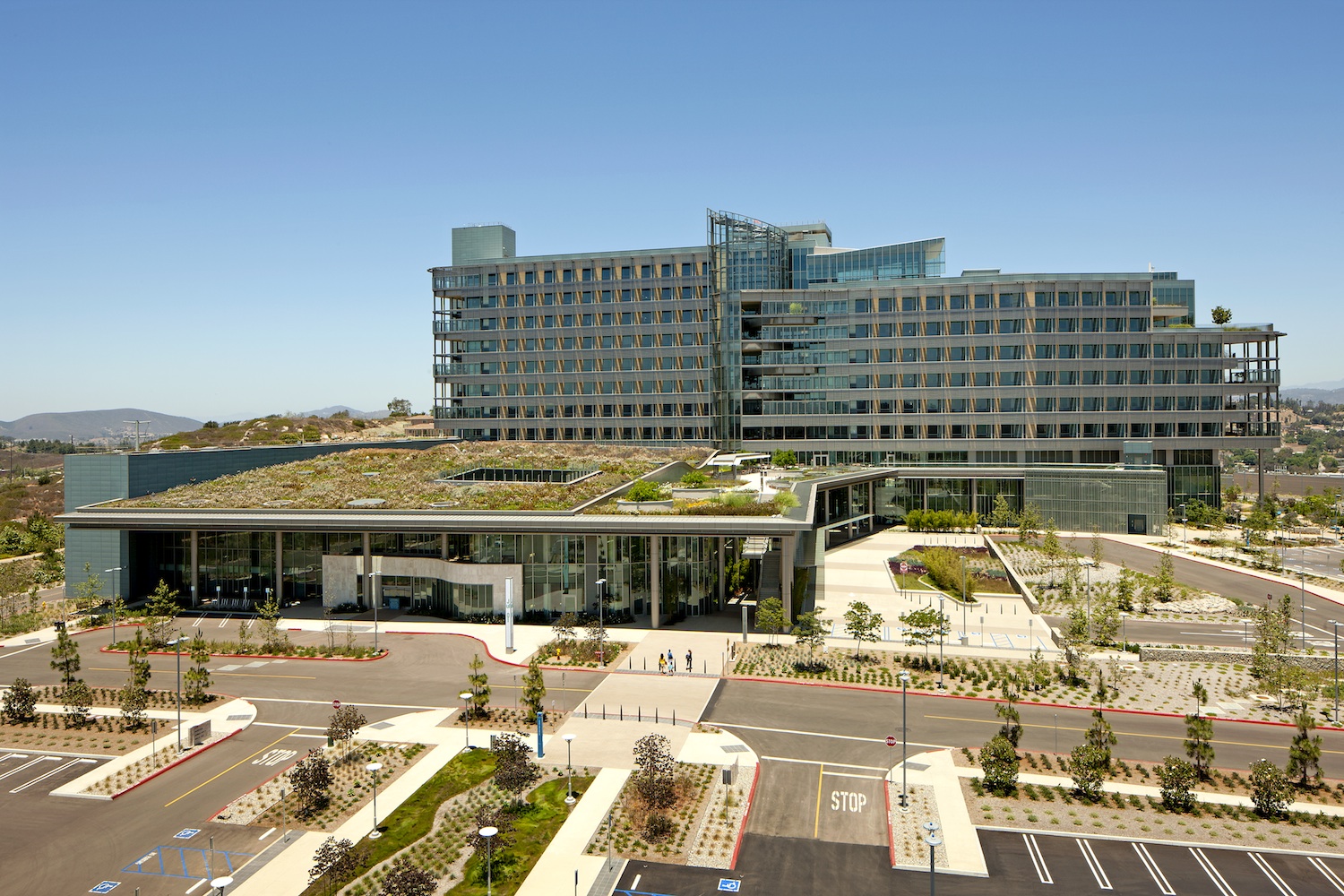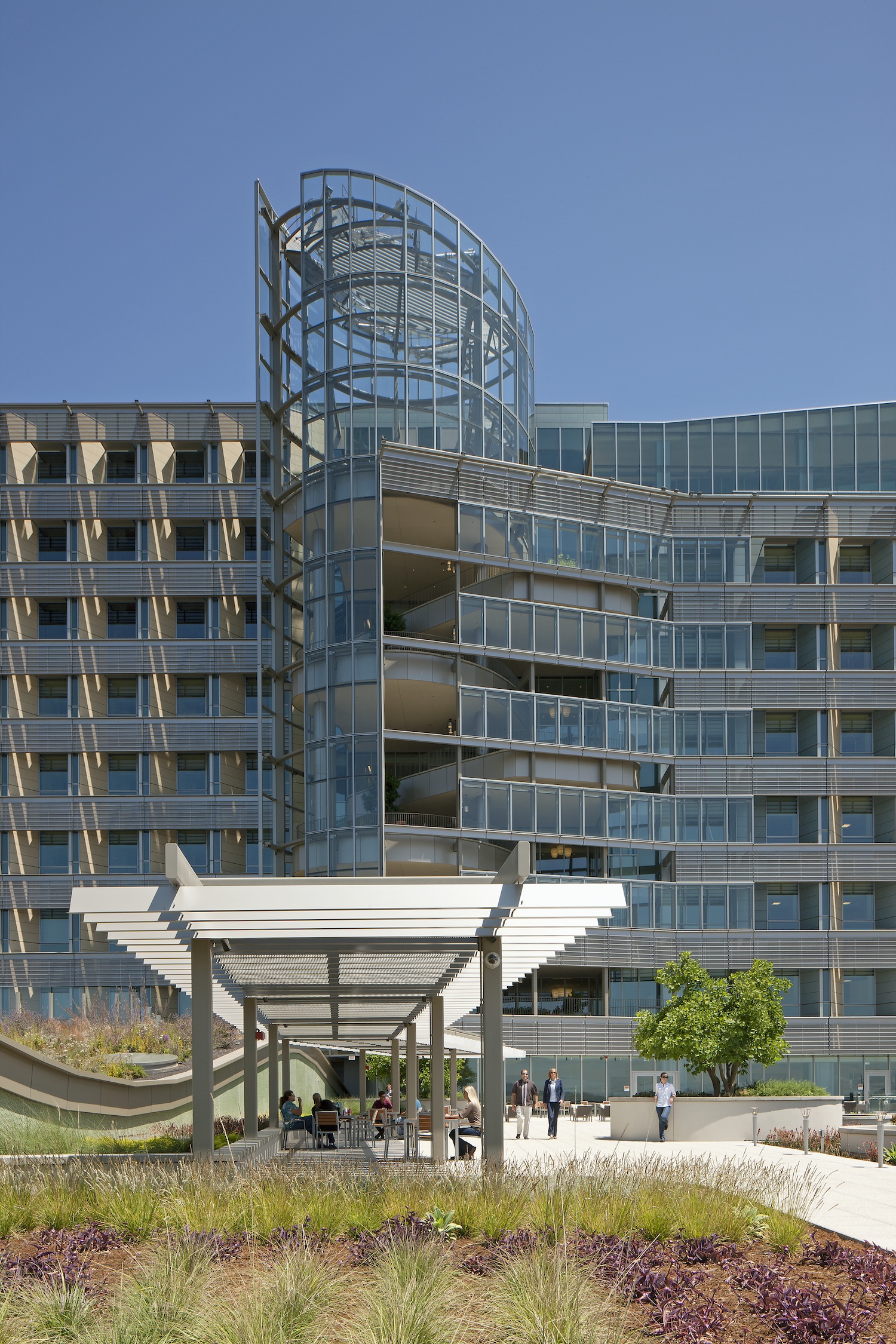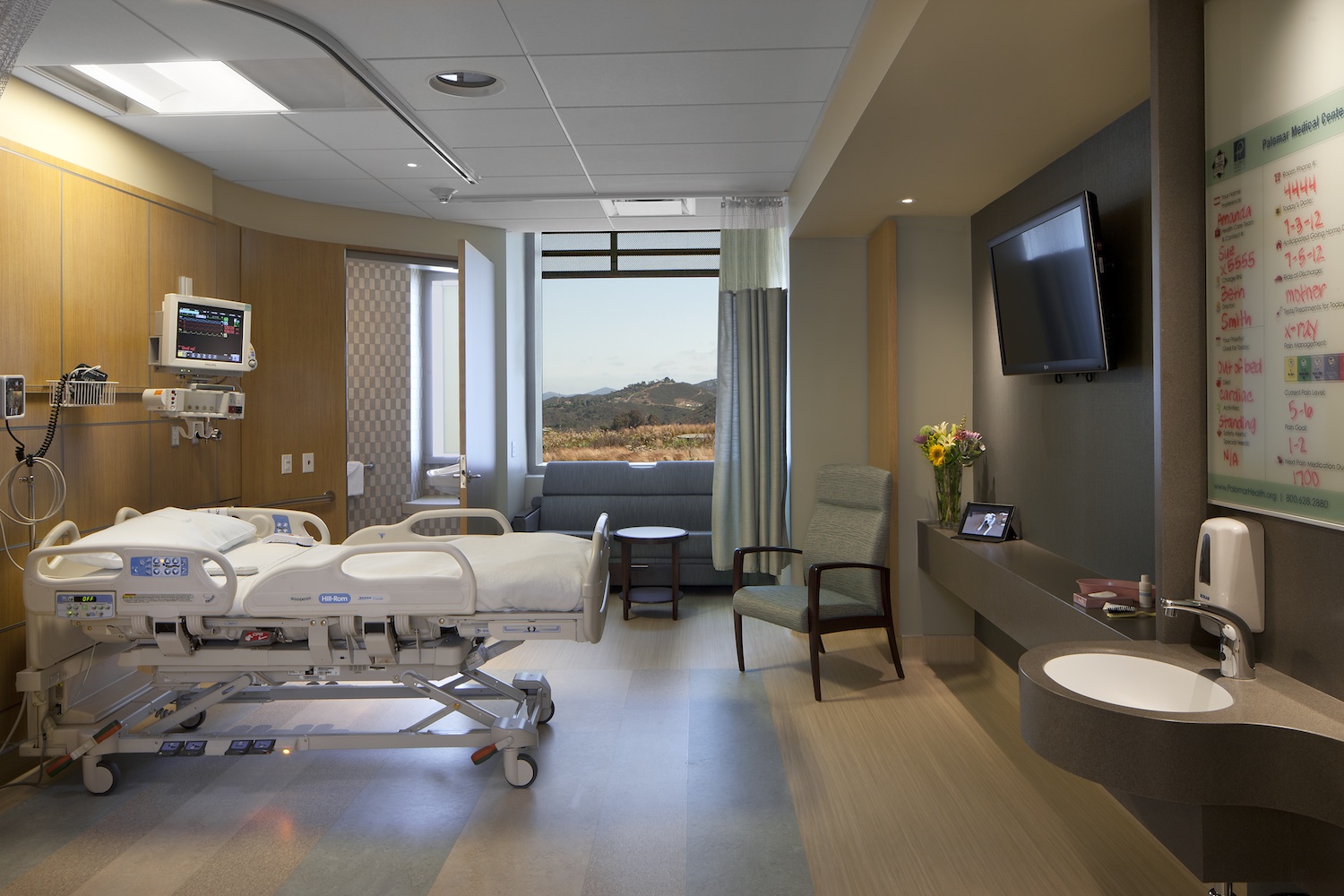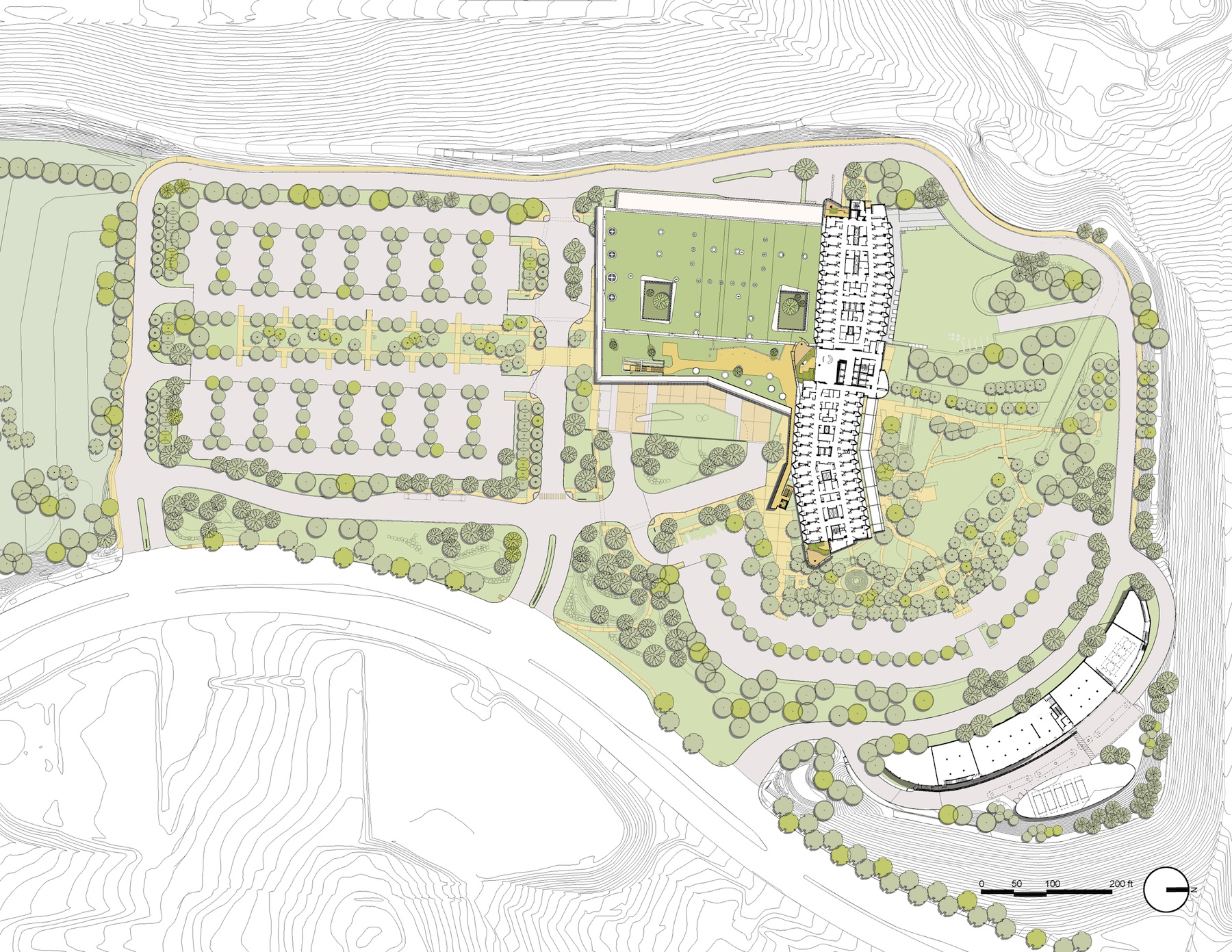Category A: Built, Less than $25 million in construction cost
1. UCLA Outpatient Surgery and Oncology Center; Santa Monica, California
Michael W. Folonis Architects
This outpatient surgery, oncology treatment and medical office facility asserts that a more-natural and less-clinical environment promotes healing in patients and productive behavior in medical staff. The architects sought the maximum inclusion of natural lighting and ventilation, and an enhanced indoor-outdoor connection. The design concept is inspired by the belief that principles of Modernism are the ideal means to realize the high standards of sustainability in healthcare design. The design achieves an aesthetic ideal, while delivering a patient-focused healing environment, the utility required by the owner, and the requirements for Gold LEED certification. This is the only project to win AIA-AAH Awards in both on-the-boards and built categories. Photos: Tom Bonner
2. Peace Island Medical Center; Friday Harbor, San Juan Island, Washington
Mahlum
Peace Island Medical Center began with a remote island community uniting to realize their vision of rural healthcare in the San Juan Islands. The hospital melds discreetly into the old-growth forest, basalt slopes and wetlands. Island resources are extremely limited, making sustainable choices fundamental. Naturally ventilated clinical areas and patient rooms connect occupants with fresh air and drive down energy use. The design reflects the values of the caregivers and community, embodying humility, environmental sensitivity and innovation. The Living Building Challenge served as a roadmap for sustainable initiatives, decoupled mechanical systems, greatly reduced potable water use and minimal energy use. Photos: Courtesy Mahlum
3. Adamsville Regional Health Center; Atlanta
Stanley Beaman & Sears
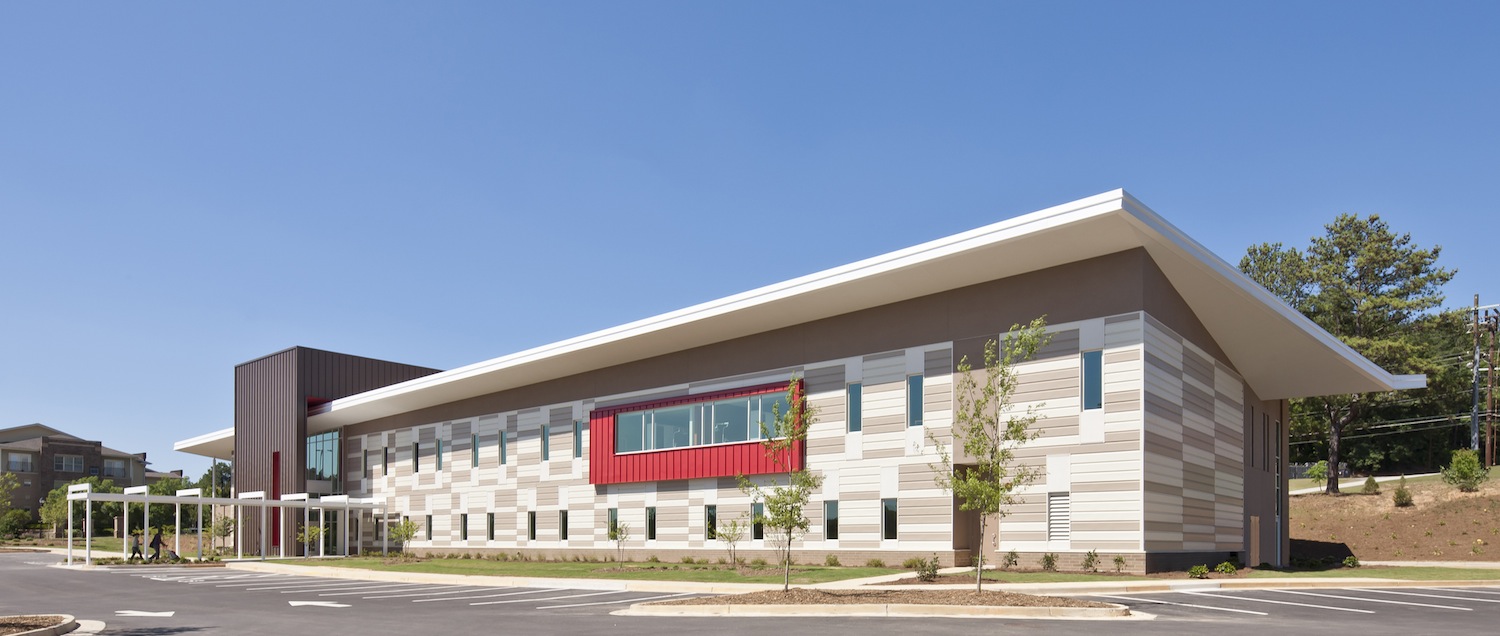
The 34,000-square-foot building houses a primary care clinic, a behavioral health clinic, childcare facilities, a dental clinic and a workforce community center. The co-location of these functions led the design team to consider the communal folk art of quilting and inspiration also came from the constructed paintings of contemporary Atlanta artist Radcliffe Bailey, who pieces together found objects, archival photographs and historic imagery with jazz-like effects. The design-build, fast-track project was completed, from start to finish, in 275 days. It required coordinating the participation of multiple stakeholders including the City of Atlanta and Fulton County governments, the contracting firm Whiting-Turner, Fulton County Board of Commissioners Vice Chair Emma Darnell, the Fulton County Office of Cultural Affairs, the staff of West End Medical Center and residents of the Adamsville neighborhood. Photos: Jonathan Hillyer
4. The Everett Clinic Smokey Point Medical Center; Smokey Point, Washington
ZGF Architects LLP

Photo: Benjamin Benschneider
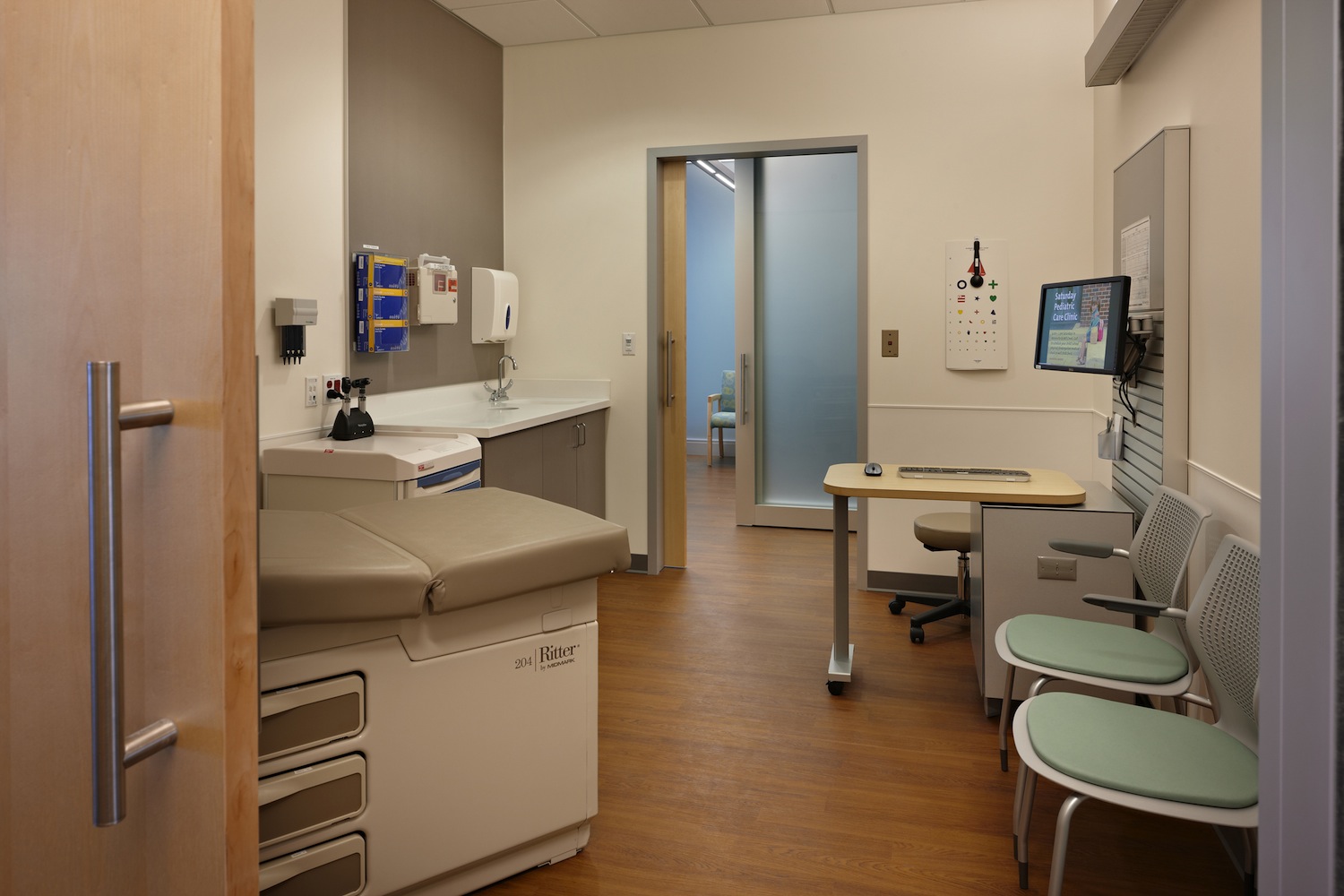
Photo: Doug Scott
Category B: Build, More than $25 million in construction cost
5. University of Minnesota Amplatz Children’s Hospital; Minneapolis, Minnesota
Tsoi/Kobus & Associates
The University of Minnesota Amplatz Children’s Hospital started with a vision: to create the ideal environment in which to provide and receive children’s healthcare. Today, the hospital is setting new standards for safety, comfort, and clinical efficiency. The six-story building consolidates the pediatric programs and inpatient units. It includes 96 same-handed, private inpatient rooms, a sedation/observation unit, dialysis unit, pediatric emergency department, an expansion of the existing imaging department and surgical suite, family resource center, gift shop, and underground parking. The building creates a distinctive identity for the hospital, immediately engaging visitors with its bright and playful exterior of multi-colored stainless steel panels. An interactive interior design theme, “Passport to Discovery,” enlivens the interior, aids in wayfinding, and offers opportunities for diversion and discovery. Photos: Nick Merrick, Hedrich Blessing; Drawings: TK&A
6. Palomar Medical Center; Escondido, California
CO Architects
Nationally recognized for its innovative approach to sustainable design, healing environments and technical execution, Palomar Medical Center is the first phase of development of a new 35-acre campus that includes the 360-bed acute-care hospital and a new central plant. Innovations in medical planning and architectural design meet the project goals of improving access to care, improving operational efficiencies, and creating sustainable, high-performance healing environments. Design strategies incorporate garden spaces at every level of the 11-story nursing tower, and utilize green-roof technology that extends the landscape and improves views from the patient rooms. The design includes a full complement of water conservation, air quality, and energy-saving measures. Photos: Tom Bonner
CONTINUE ARTICLE (READ ABOUT PROJECTS #7-12)
Related Stories
Cultural Facilities | Nov 21, 2023
Arizona’s Water Education Center will teach visitors about water conservation and reuse strategies
Phoenix-based architecture firm Jones Studio will design the Water Education Center for Central Arizona Project (CAP)—a 336-mile aqueduct system that delivers Colorado River water to almost 6 million people, more than 80% of the state’s population. The Center will allow the public to explore CAP’s history, operations, and impact on Arizona.
MFPRO+ New Projects | Nov 21, 2023
An 'eco-obsessed' multifamily housing project takes advantage of downtown Austin’s small lots
In downtown Austin, Tex., architecture firm McKinney York says it built Capitol Quarters to be “eco-obsessed, not just eco-minded.” With airtight walls, better insulation, and super-efficient VRF (variable refrigerant flow) systems, Capitol Quarters uses 30% less energy than other living spaces in Austin, according to a statement from McKinney York.
MFPRO+ News | Nov 21, 2023
California building electrification laws could prompt more evictions and rent increases
California laws requiring apartment owners to ditch appliances that use fossil fuels could prompt more evictions and rent increases in the state, according to a report from the nonprofit Strategic Actions for a Just Economy. The law could spur more evictions if landlords undertake major renovations to comply with the electrification rule.
Codes and Standards | Nov 21, 2023
Austin becomes largest U.S. city to waive minimum parking requirements
Austin, Texas recently became the largest city in the United States to stop requiring new developments to set a minimum amount of parking. The Austin City Council voted 8-2 earlier this month to eliminate parking requirements in an effort to fight climate change and spur more housing construction as Texas’s capitol grapples with a housing affordability crisis.
MFPRO+ News | Nov 21, 2023
Underused strip malls offer great potential for conversions to residential use
Replacing moribund strip malls with multifamily housing could make a notable dent in the housing shortage and revitalize under-used properties across the country, according to a report from housing nonprofit Enterprise Community Partners.
Giants 400 | Nov 16, 2023
Top 100 Science + Technology Facility Architecture Firms for 2023
Gensler, HDR, Page Southerland Page, Flad Architects, and DGA top BD+C's ranking of the nation's largest science and technology (S+T) facility architecture and architecture/engineering (AE) firms for 2023, as reported in Building Design+Construction's 2023 Giants 400 Report. Note: This ranking factors revenue from all science and technology (S+T) buildings work, including laboratories, research buildings, technology/innovation buildings, pharmaceutical production facilities, and semiconductor production facilities.
Resiliency | Nov 16, 2023
How inclusive design supports resilience and climate preparedness
Gail Napell, AIA, LEED AP BD+C, shares five tips and examples of inclusive design across a variety of building sectors.
Retail Centers | Nov 15, 2023
Should retail developers avoid high crime areas?
For retailers resolute to operating in high crime areas, design elements exist to mitigate losses and potentially deter criminal behavior.
MFPRO+ News | Nov 15, 2023
Average U.S multifamily rents drop $3 to $1,718 in October 2023: Yardi Matrix
Multifamily fundamentals continued to soften and impact rents last month, according to the latest Yardi Matrix National Multifamily Report. The average U.S. asking rent dropped $3 to $1,718 in October, with year-over-year growth moderating to 0.4%, down 40 basis points from September. Occupancy slid to 94.9%, marking the first decline in four months.
MFPRO+ Special Reports | Nov 14, 2023
Register today! Key trends in the multifamily housing market for 2024 - BD+C Live Webinar
Join the BD+C and Multifamily Pro+ editorial team for this live webinar on key trends and innovations in the $110 billion U.S. multifamily housing market. A trio of multifamily design and construction experts will present their latest projects, trends, innovations, and data/research on the three primary multifamily sub-sectors: rental housing, senior living, and student housing.


